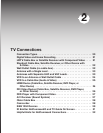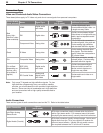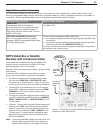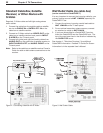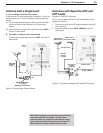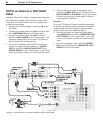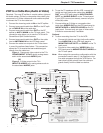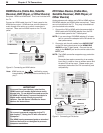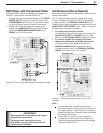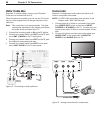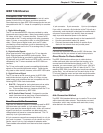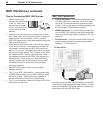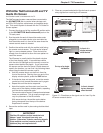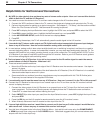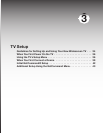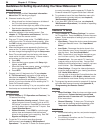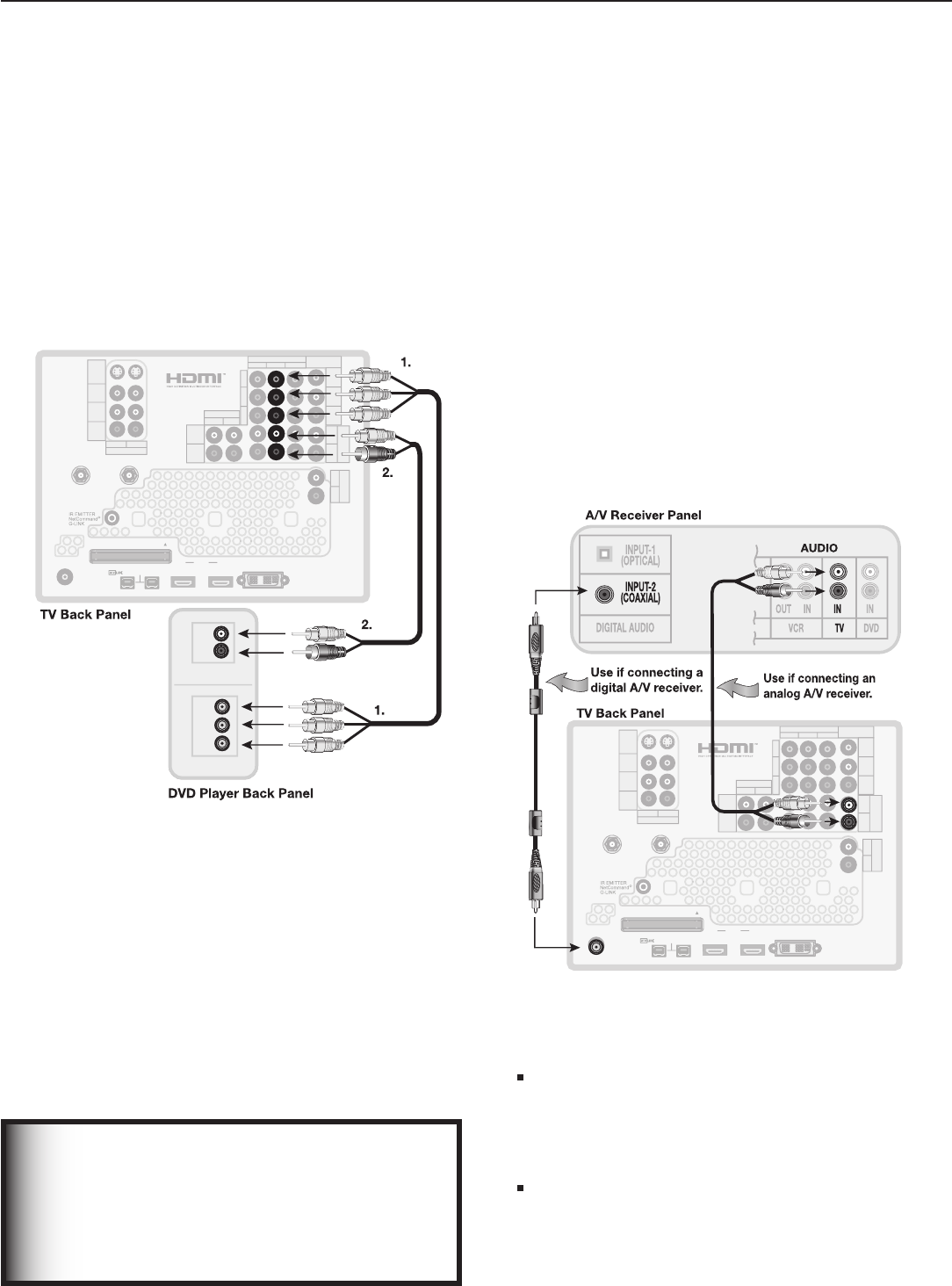
Chapter 2. TV Connections 27
DVD Player with Component Video
Component video cables and analog audio cables are
required. These are not included with the TV.
1. Connect the component video cables from
Y PB PR
VIDEO OUT
on the back of the DVD player to the
COMPONENT
jacks on the TV back panel, match-
ing the red, green, and blue colored connections.
2. Connect left (white) and right (red) stereo audio
cables from
AUDIO OUT
on the back of the DVD
player to
COMPONENT/AUDIO LEFT
and
RIGHT
on the TV back panel.
TM
R
Figure 10. Connecting a DVD player with component video
IMPORTANT
See Appendix B for component video signal
compatibility information.
For digital audio connections to your
A/V receiver, see your DVD player and A/V
receiver Owner’s Guides.
A/V Receiver (Sound System)
Most setups require either a digital audio cable or analog
stereo audio cables.
The TV makes all audio available in digital and analog
formats. Analog audio coming into the TV is available
in digital format on the
DIGITAL AUDIO OUT
jack.
Digital incoming audio is available in analog format on the
AUDIO OUT LEFT/RIGHT
jacks. Usually, only one of
the following connections is required:
• To connect an analog A/V receiver
Connect left (white) and right (red) audio cables from
AUDIO OUT/LEFT
and
RIGHT
on the TV back
panel to the
TV AUDIO INPUT
on the A/V receiver.
• To connect a digital A/V receiver with Dolby
Digital surround sound and PCM audio support
Connect one end of the digital audio cable to
DIGITAL AUDIO OUT
on the back of the TV.
Connect the other end to the
COAXIAL DIGITAL
INPUT
on the back of the A/V receiver.
TM
R
Figure 11. Connecting audio from the TV to an A/V
receiver
Note:
On rare occasions, an HDMI signal may be
copy-restricted and cannot be output from the TV
as a digital signal. To hear these copy-protected
signals through the A/V receiver, use connections
for analog A/V receivers.
Check the A/V receiver’s Owner’s Guide for
information concerning use of the digital input
and switching between digital sound and analog
stereo sound from the TV.



